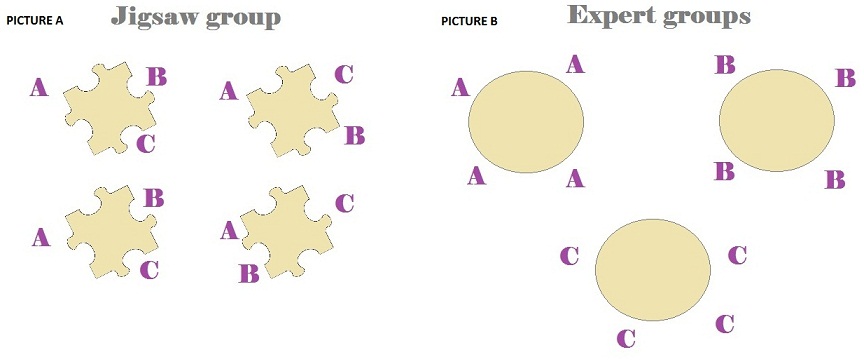Benefits
- Efficient way to learn
- Learning is coming from the participants
- It is a collaborative effort, as participants are responsible for the process and its achievement
- Emphasis on interpersonal and interactive skills
- Focus on speaking and listening skills
- Participants also engage in reflective and creative thinking throughout the process
Step by Step
- All participants should be divided into different groups. These groups should be diverse, but equal in terms of numbers.
- Each participant in the group should be assigned a topic and given handouts with information regarding that topic. Given the fact that each participant in these groups has a different topic assigned to them, the groups are now called Jigsaw Groups. (Picture A)
- You can only have as many topics as you have people in each group.
- In each group there should be a group leader.
- Then each participant from the jigsaw group should join their expert group. These groups should consist of all the participants that were assigned the same topic. (Picture B)
- Each group should become familiar with the topic assigned and make sure they all understand it as they will have to teach it back to the other participants.
- All participants should come back to their initial jigsaw group.
- Each expert should teach their topic to the group by presenting it and encouraging questions and clarifications. All participants should also become experts on the different topics.
- At the end of the session there should be an assessment activity on each topic so that participants realize what they have learned by using this method.

Tips for Facilitators
- The groups should be allowed enough time to get familiar with the handouts given for each topic.
- Observe the process and ensure it is running smoothly.
- Intervene in case some challenges come up.
- Make sure that everyone’s understanding of the topic is correct and everyone’s voice is being heard in the process. [2]
Job Aid
 How to conduct a Jigsaw session How to conduct a Jigsaw session |
